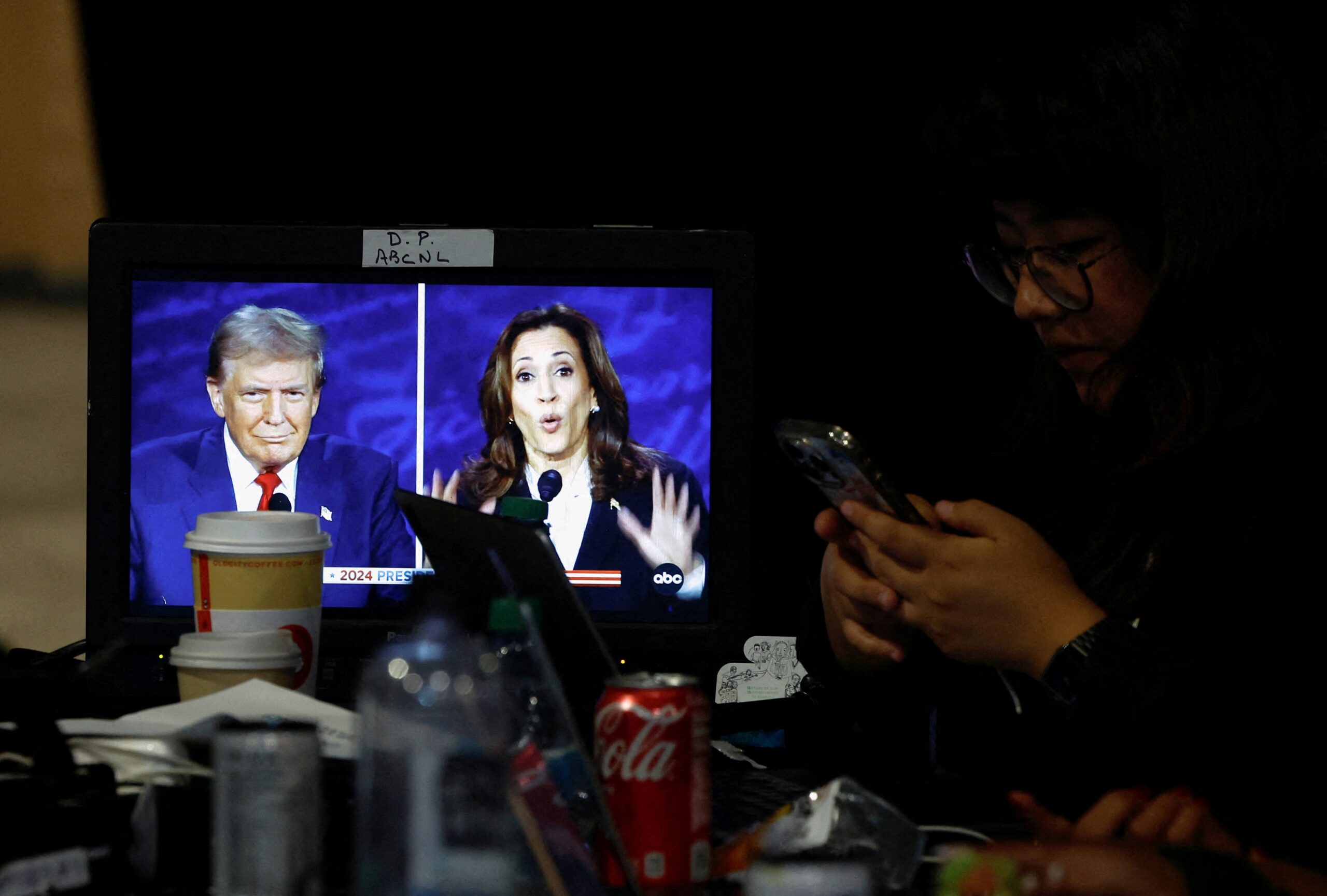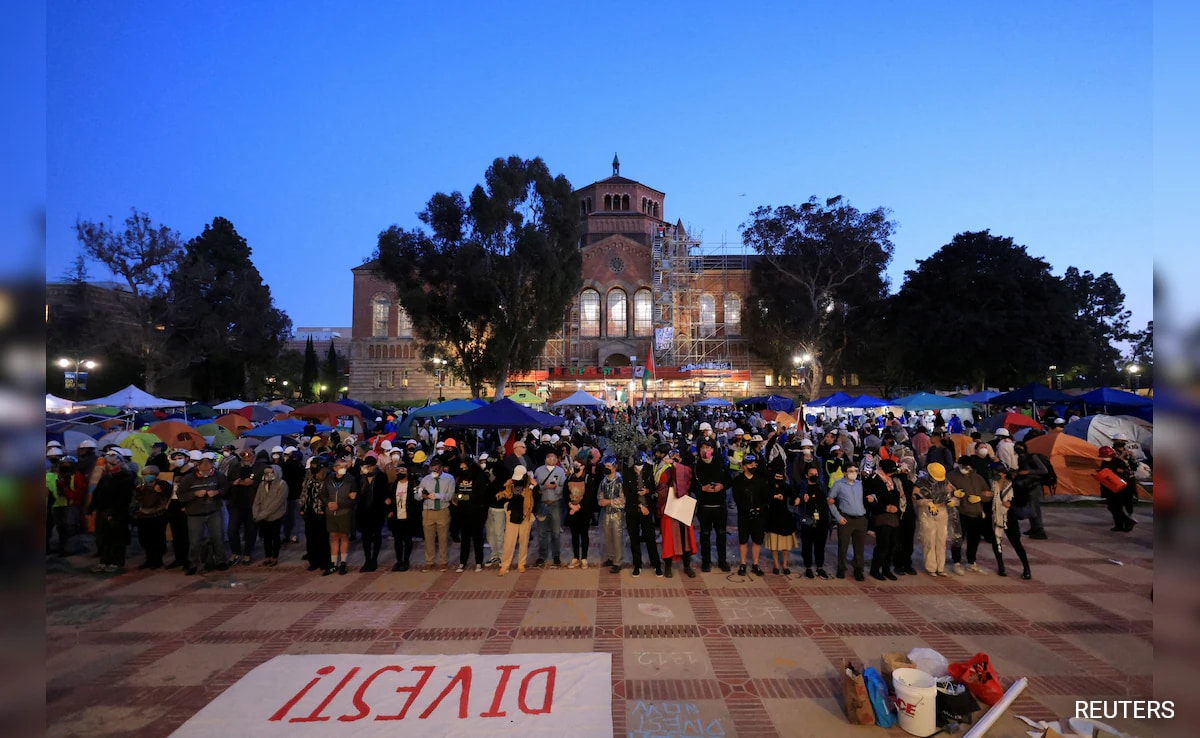Free and fair elections in democratic societies reveal the spirit of a nation, especially in the United States with its extended election cycles. On the eve of a pivotal vote, what is the public mood in the world’s most influential country?
If one were to capture the prevailing sentiment in the U.S. as election day approaches, it would be “blue funk”. The atmosphere is saturated with anxiety, division, and a sense of foreboding. With near-total polarisation and rising intolerance fuelled by Donald Trump’s militant campaign style, this election is viewed with unprecedented worry, unhappiness, and fear.
Nearly nine in 10 voters believe America will suffer lasting harm if their side loses. Close to 60% of Kamala Harris supporters report feeling “frightened” about a Trump victory; 47% of Trump supporters feel similarly about a Harris win. More than half of voters anticipate potential violence after the election, and 53% expect the country’s divisions to deepen regardless of the outcome. Alarmingly, one in five Americans would consider resorting to violence to achieve political ends.
“People Are Fed Up”
Scott Evans, 64, an early voter in Atlanta, expressed his disillusionment: “I feel like I live in a country I don’t want to be in anymore.” Madison Bates, a 21-year-old student, added, “Civil warpeople against the government. I definitely think if Trump doesn’t get in, that’s what could happen. People are fed up. You see it every day.”
This grimness is evident across public opinion metrics. Six in 10 voters feel the country is on the wrong track. Over half say they are worse off than four years ago. In swing states, seven in 10 voters believe the political and economic systems require substantial change or even a complete overhaul, and they perceive the economy as rigged to benefit the wealthy and powerful.
The public’s view of politics and politicians is “unrelentingly negative”. More than a quarter of respondents (28%) view both major parties unfavourably, and 63% have little or no confidence in the political system’s future. It’s no surprise a nonpartisan group has labelled the American electorate an “exhausted majority”.
What Americans Think About The Economy
In politics, perception often becomes reality, especially on the topic of the economyvoters’ top concern. Only 5% of Americans rate the current economy as “excellent” or “good”, while 51% believe it’s in “poor” or “terrible” condition.
Real disposable personal income, essentially take-home pay, has been stagnant for the last four years. With the cost of essentials up 20% during this period, and housing, child care, and health care costs still climbing, affordability is a significant concern, with many blaming the Biden-Harris administration.
The impact is particularly severe on the 60% of voters without a college degree. In 1980, blue-collar workers earned almost 10% more than the national average, enabling them to support families, buy homes, take vacations, and send their children to college. Forty years later, their inflation-adjusted income is stagnant, and they now make 10% less than the average worker.
Unionisation rates have historically been highest in the swing states of the MidwestMichigan, Wisconsin, and Pennsylvaniawhere organised labour once provided a premium on wages. With the decline in unionised manufacturing jobs, incomes have fallen relative to other sectors, leaving many susceptible to the MAGA narrative that they are victims in a zero-sum economy where immigrants and women gain at their expense.
A Nuanced Reality
Yet, the reality of the U.S. economy is more nuanced and less grim. While prices rose about 20% from the beginning of the pandemic through 2023, the median worker’s hourly wages rose by over 26%. From 2019 to 2023, wages for the lowest-paid decile of workers grew four times faster than those for middle-class earners, and over 10 times faster than for the wealthiest decile. Pay for workers under 25 has also increased twice as fast as for older workers. Meanwhile, the “college wage premium”the pay gap between those with and without a college degreev has fallen to its lowest level in 15 years.
The Federal Reserve’s Survey of Consumer Finances, conducted every three years, shows that from 2019 to 2022, the net worth of the median US household rose by 37%, from about $141,000 to $192,000, adjusted for inflation. This is the largest three-year increase on record since 1989. Every income group saw significant net worth gains, with the largest increases seen among lower-income, middle-class, Black, Latino, and younger households, contributing to a modest decrease in wealth inequality.
The economic picture remains complex, with significant improvements for many alongside persistent affordability challenges for others, shaping a conflicted national mood as voters head to the polls.
The Economist offers some telling statistics in its recent cover story on the US economy titled The World’s Envy. Average wages in America’s poorest state, Mississippi, are higher than the averages in Britain, Canada and Germany. This year, the average American worker will generate about $171,000 in economic output, representing a 70% increase in productivity in the last 25 years. The US accounts for more than half of global private-sector investment in AI. As the paper concluded: “An economy with an unemployment rate of 4% and a per-person GDP of $85,000 does not have to be made great again; it is great.”
Trump’s Immigration Gambit
Trump knows that immigration places the Biden-Harris administration on slippery ground, which is why he has made it his leading campaign issue, sidelining his advisers’ calls to prioritise the economy. The administration kept the borders relatively open until this June, when enforcement measures finally tightened. Harris has attempted to shift some blame to Trump, citing his role in blocking a bipartisan bill earlier in 2024 that would have enforced stricter policies sooner. But this strategy has not gained traction.
Over the last two years, net immigration to the US has been the highest globally, with 2.6 million immigrants in 2022 and 3.3 million in 2023. Since Biden took office, nine million immigrants have entered the country, roughly half of them undocumented. Only one in five Americans find these numbers acceptable; 32% believe the US should “slow the influx” of immigrants, and 16% favour “instituting a moratorium on new arrivals”. One-third say America should “close the border immediately”.
Trump has rallied his base, particularly the MAGA contingent, against undocumented immigrants, inflating their number to between 20-25 million, though the actual figure is likely about half that. He has pledged to undertake mass deportations if elected. Over 60% of Americans, including 53% of Hispanics, say they support a programme to deport undocumented immigrants.
Immigration has become a flashpoint, underscoring deep cultural divides in the U.S. Studies indicate that immigrants’ “different way of life” is often seen as a threat to longstanding communitiesmainly among older, non-college-educated, working-class, predominantly white populations from European backgrounds, as well as religious and rural Americans. These groups feel increasingly alienated from shifting social and moral values, believing the elite is complicit in eroding traditional identities.
Religion And Politics
Despite declining religiosity, nearly two-thirds of Americans identify themselves as Christian, according to the Public Religion Research Institute. In the 1980s, white Christians, especially “born-again” evangelicals (who make up 14% of the population), emerged as a key Republican voting bloc. Today, 60% of Protestants, including 8 out of 10 white evangelicals, support Trump. Political scientist Paul Djupe’s surveys suggest that 18% of Americans strongly agree that modern-day prophets continue to reveal God’s plans for humanity. Among these, three-fifths believe the upcoming election may be the last chance to “rid America of demonic influence”, and two-fifths think a civil war might be necessary to “set the country back on the right path”.
Gender is another widening societal divide. Men and women’s political views are diverging sharply, with a recent poll showing men favouring Trump by four points and women favouring Harris by 10. Nearly seven in 10 Trump supporters believe Harris’s policies will worsen men’s lives. Whereas in the Obama years, the gap between young men and women identifying as liberals was only five points, this gap has tripled to 15 points under the Trump-Biden years.
Historically, incumbents need nearly a 40% approval rating to secure re-election; the Biden-Harris administration’s approval currently hovers around 28%. Yet, with Harris neck-and-neck with Trump in the final days, her viability largely depends on Trump’s unfavourable ratings. Trump’s net negative rating remains high among American voters. The Harris campaign is counting on a popular vote advantage to offset the Electoral College’s Republican tilt.
Stay tuned for next week’s final curtain raiser on the US presidential elections.
(Ajay Kumar is a senior journalist. He is the former Managing Editor, Business Standard, and former Executive Editor, Economic Times.)
Disclaimer: These are the personal opinions of the author
Waiting for response to load…















